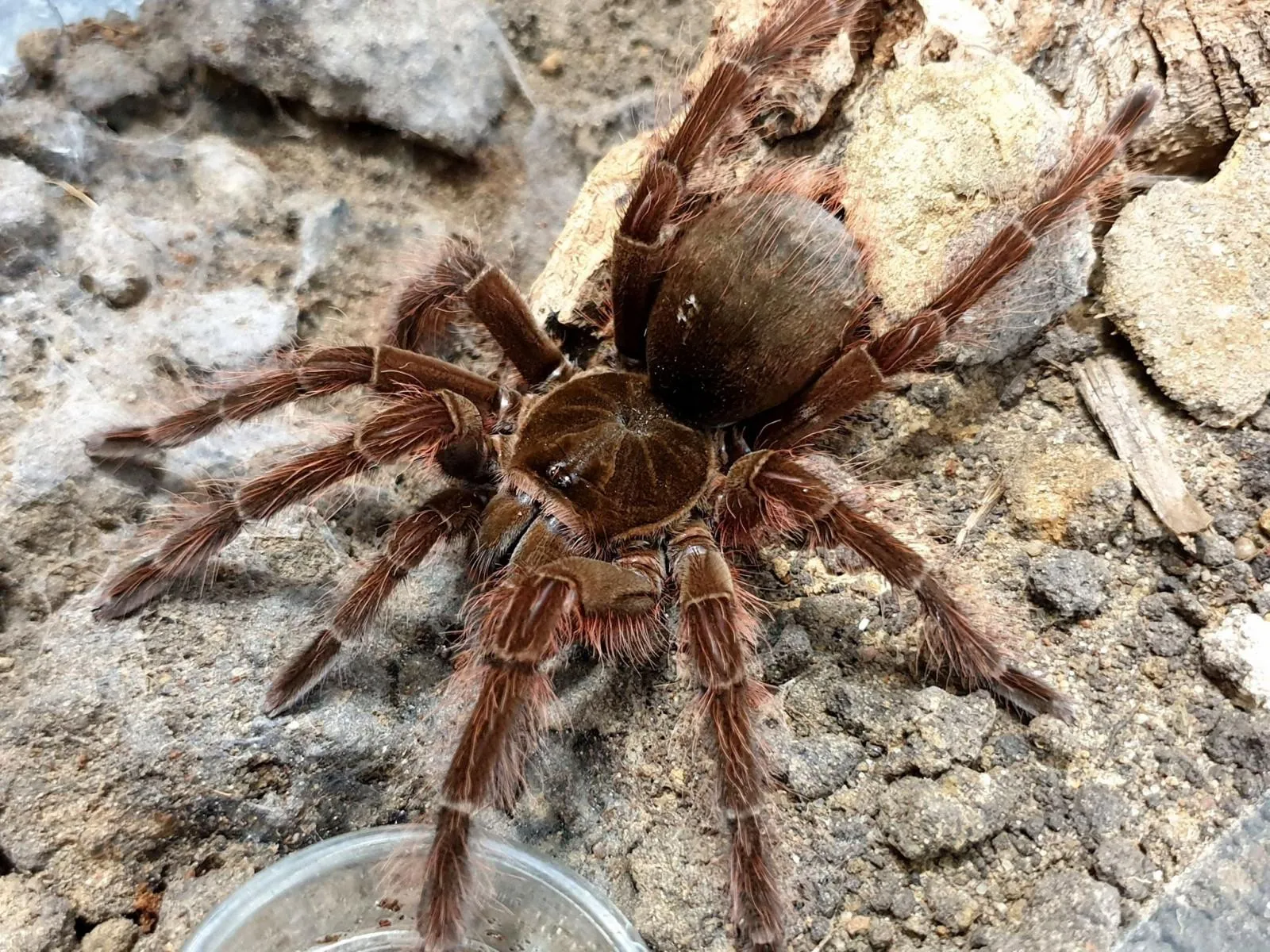Top 5 Facts About the Tarantula Theraphosa Blondi
The Theraphosa Blondi, also known as the Goliath Birdeater tarantula, is a truly fascinating creature. This behemoth of the arachnid world captures the attention of both seasoned enthusiasts and casual observers alike. These gentle giants, while intimidating in appearance, possess unique characteristics that set them apart from other spiders. They are native to the rainforests of South America, where they live a mostly solitary life. In this article, we delve into five key facts about the Theraphosa Blondi, offering a comprehensive look at their impressive size, habitat, diet, defensive mechanisms, and lifespan, providing a deeper understanding of this extraordinary species. Prepare to be amazed by the Goliath Birdeater!
The Theraphosa Blondi’s Impressive Size
One of the most striking features of the Theraphosa Blondi is its enormous size. It is, without a doubt, one of the largest spider species in the world, a title that earns it widespread recognition. The Goliath Birdeater boasts a leg span that can reach up to 12 inches (30 cm) or more. Their bodies can grow to be over 4 inches (10 cm) long. Imagine a spider the size of a dinner plate! This impressive size is a testament to its robust nature and its position at the top of the food chain in its natural habitat. The sheer scale of the Theraphosa Blondi is a sight to behold, making it a popular choice among tarantula enthusiasts.
Understanding the Gigantic Tarantula’s Dimensions
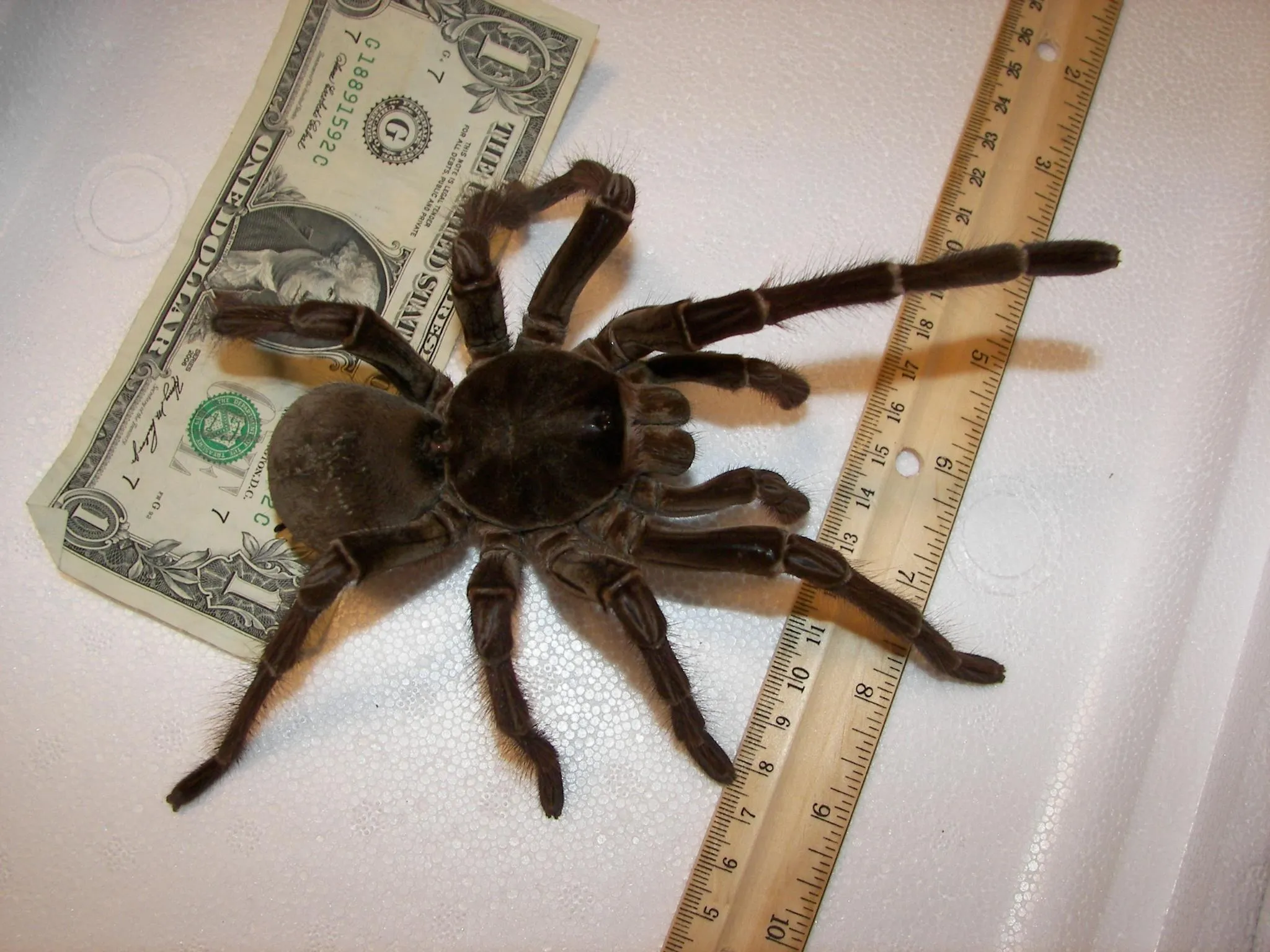
The Theraphosa Blondi’s size is not just about leg span; it also involves a substantial body mass. Fully grown females can weigh over 6 ounces (170 grams), which is heavier than many small mammals. Males tend to be slightly smaller. This significant weight and impressive leg span contribute to their imposing presence. Observing a Theraphosa Blondi up close provides a true appreciation for the sheer scale of the animal. Their size is an adaptation that helps them dominate their environment, making them efficient predators capable of taking down a variety of prey.
What factors contribute to its size
The Theraphosa Blondi’s size is influenced by several factors, including genetics, diet, and environmental conditions. A rich diet of insects, small vertebrates, and other prey is essential for their growth. Proper care in captivity, including consistent feeding and suitable habitat, is crucial for achieving maximum size. Genetic predispositions also play a role, with some individuals naturally growing larger than others. The warm, humid climate of their native habitat supports their metabolic rate, further aiding their development. Captive-bred Theraphosa Blondi, when given optimal care, often reach impressive sizes, demonstrating the impact of these factors.
Habitat and Geographic Range of Theraphosa Blondi
The Theraphosa Blondi is native to the rainforests of northern South America, primarily found in countries like Guyana, Suriname, French Guiana, and parts of Venezuela and Brazil. Their natural habitat consists of humid, tropical environments with dense vegetation and ample hiding places. These spiders typically live in burrows they dig themselves or sometimes occupy abandoned animal burrows. They prefer areas with soft, loamy soil, which makes burrowing easier. The presence of a rich ecosystem with a variety of potential prey is also crucial for their survival.
Where do these giant spiders live
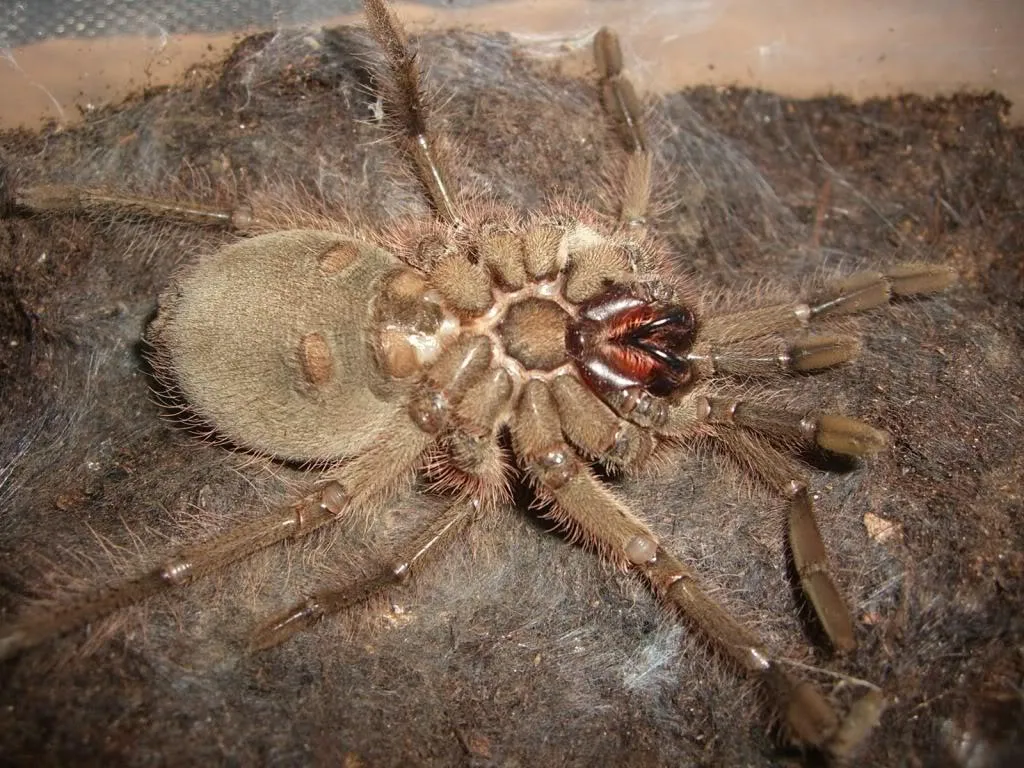
In their natural habitat, Theraphosa Blondi spiders prefer to live in burrows dug into the ground or under the roots of trees. These burrows provide shelter from the elements and protection from predators. They are often found near bodies of water, as humidity is critical for their survival. The spiders line their burrows with silk, creating a comfortable and secure home. These burrows are usually hidden under the leaf litter or amongst the roots of plants, making them difficult to spot. The spiders spend most of their time in their burrows, only venturing out to hunt or mate.
How their habitat impacts their behavior
The Theraphosa Blondi’s habitat significantly influences its behavior. The humid environment supports its respiratory system and helps prevent desiccation. The dense vegetation provides camouflage and cover for hunting and protection. The availability of various prey species determines their diet and foraging behavior. The spider’s solitary nature is also a product of its habitat, as they typically do not coexist peacefully with others of their kind except during mating. Their burrowing behavior is essential for thermoregulation and protection. The habitat shapes every aspect of the Theraphosa Blondi’s life, from its physical adaptations to its social interactions.
The Theraphosa Blondi’s Diet and Feeding Habits
Theraphosa Blondi is an opportunistic predator with a varied diet. While the name “Birdeater” might suggest a diet primarily consisting of birds, this is not the case. In their natural environment, their diet primarily consists of insects, such as crickets, beetles, and cockroaches. They also consume small vertebrates, including lizards, rodents, and occasionally small birds if the opportunity arises. Their hunting strategy involves ambushing prey from their burrows, using their powerful fangs to inject venom and subdue their victims. The Goliath Birdeater is a patient hunter, waiting for the right moment to strike.
Exploring their varied diet
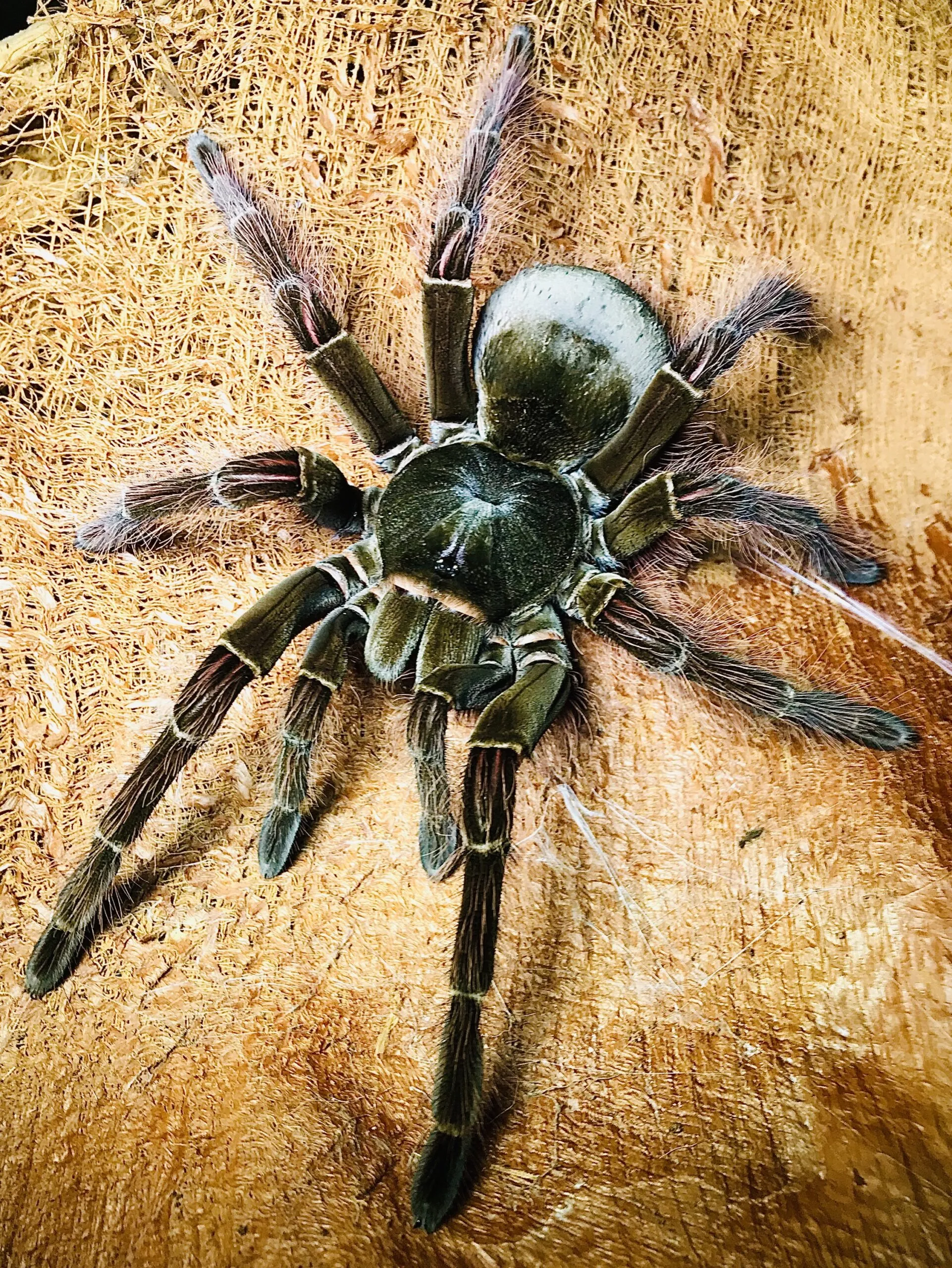
The Theraphosa Blondi’s diet varies based on prey availability and the spider’s size. Younger spiders often consume smaller insects, while adult females can handle larger prey. Captive-raised spiders are typically fed a diet of insects, such as crickets and mealworms, supplemented with occasional pinky mice or small lizards. A diverse diet ensures they receive all the necessary nutrients for healthy growth and development. They are not picky eaters, and their ability to adapt to different food sources contributes to their survival in various environments. The diet plays an important role in their overall health and lifespan.
Feeding frequency and best practices
Feeding frequency for Theraphosa Blondi depends on their age and metabolism. Younger spiders may need to be fed more frequently, perhaps once or twice a week, while adults can be fed every one to two weeks. It’s essential to monitor their appetite and adjust the feeding schedule accordingly. Overfeeding can lead to health problems, so it’s important to avoid providing too much food. When feeding, it’s crucial to ensure the prey is the appropriate size. In captivity, uneaten food should be removed to prevent mold growth and maintain a clean environment. Providing fresh water is equally important to ensure the spider stays hydrated.
Defensive Mechanisms and Behavior
Despite their impressive size, Theraphosa Blondi spiders are generally not aggressive but will defend themselves if threatened. Their primary defense mechanism is urticating hairs, which they flick from their abdomen towards potential threats. These hairs are irritating to skin and mucous membranes. Additionally, they possess large fangs capable of delivering a painful bite. While their venom is not lethal to humans, it can cause significant pain and localized symptoms. They may also hiss as a warning signal. Understanding their defensive behaviors is essential for safely handling and caring for these spiders.
Understanding their defense strategies
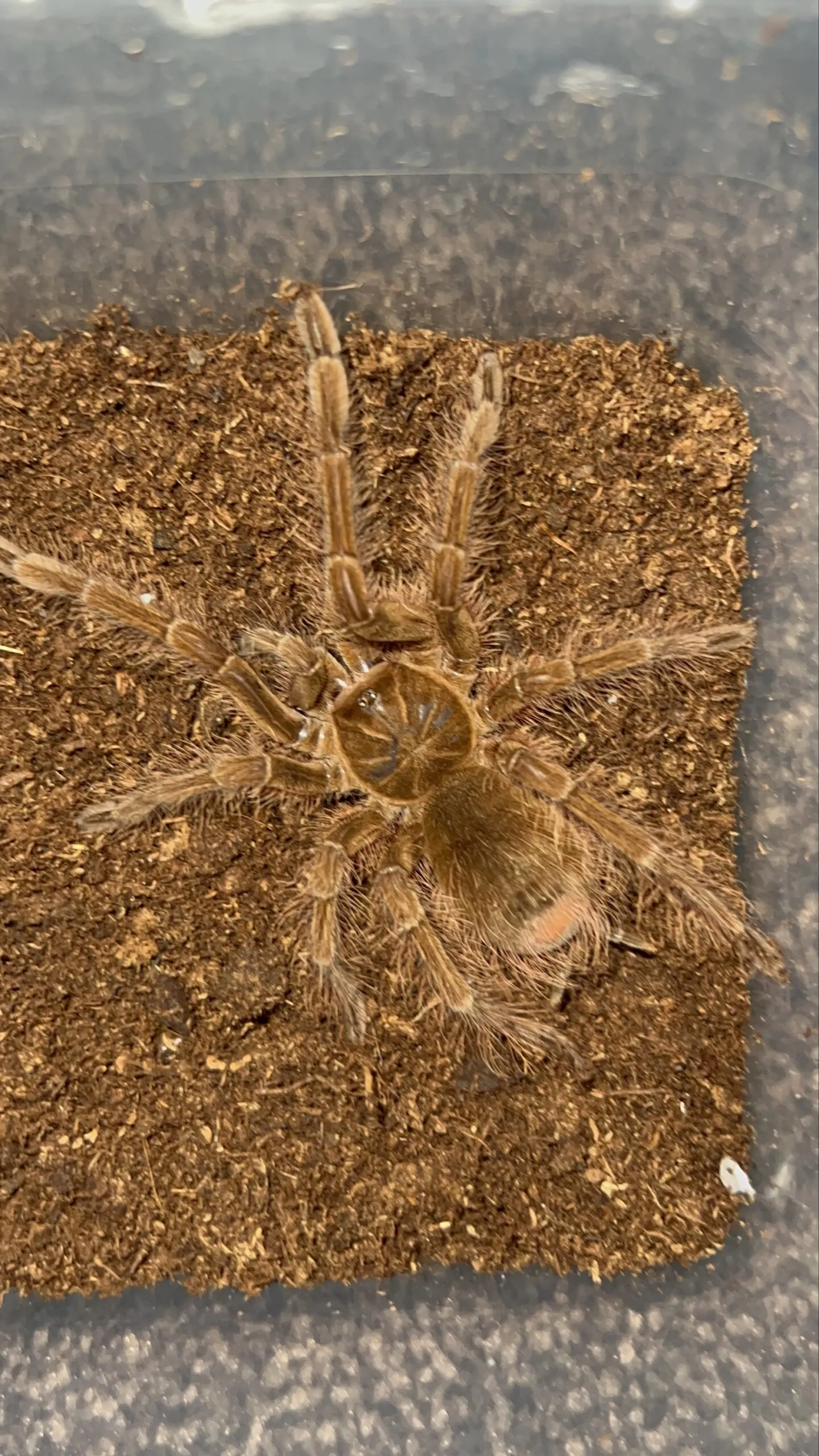
The Theraphosa Blondi employs a variety of defense strategies to protect itself. The most common defense is the flicking of urticating hairs. These hairs are barbed and cause intense itching and irritation upon contact. They can be released by rubbing the abdomen with their hind legs. Another defense mechanism is their bite, delivered using their large fangs. When threatened, they may also adopt a defensive posture, raising their front legs and displaying their fangs. The Goliath Birdeater will also hiss by rubbing their legs together. These defenses serve to deter predators and protect the spider.
How they react to perceived threats
The Theraphosa Blondi’s reaction to threats depends on its perceived level of danger. If it feels threatened, the spider may initially try to escape by retreating into its burrow. If cornered or persistently provoked, it may raise its front legs and display its fangs as a warning. It might then release urticating hairs. Bites are generally a last resort. Handling a Theraphosa Blondi requires caution. Always approach slowly and avoid sudden movements. Keep a safe distance and respect the spider’s space to minimize the risk of being bitten or exposed to urticating hairs.
Lifespan and Growth Stages
The Theraphosa Blondi has a relatively long lifespan compared to many other spider species. Females can live for up to 25 years or more, while males typically have a shorter lifespan, often living only 3 to 6 years after reaching maturity. Their lifespan is influenced by factors such as diet, environmental conditions, and overall health. The growth of the Theraphosa Blondi involves molting, where they shed their exoskeleton to accommodate their growing bodies. This process is crucial for their development, enabling them to increase in size and replace any lost appendages. Understanding the life stages is essential for proper care.
Factors affecting lifespan
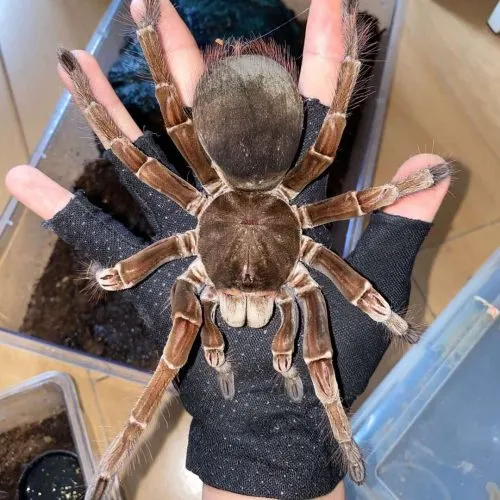
Several factors impact the lifespan of the Theraphosa Blondi. A nutritious and varied diet contributes to their longevity. A suitable environment with appropriate temperature, humidity, and substrate is equally important. Proper care in captivity, including regular cleaning and handling with care, can extend their lifespan. The absence of stress is also critical. Overhandling, extreme temperatures, or poor living conditions can significantly reduce their lifespan. Genetics and overall health also play a role, with some individuals inherently living longer than others. Proper care is very important.
Stages of growth and molting
The Theraphosa Blondi grows through molting, a process where they shed their old exoskeleton to reveal a new, larger one. Juvenile spiders molt more frequently than adults, with the frequency decreasing as they mature. Molting is a vulnerable time for the spider. They often refuse to eat and may lie on their backs. The process can take several hours, or even a day or two, to complete. After molting, the spider’s new exoskeleton is soft and pale. It takes several days for it to harden fully. During this period, the Theraphosa Blondi is particularly vulnerable and must be protected. Observing a molt is a fascinating glimpse into their development.
